nMotion is the Nashville MTA/RTA’s Strategic Plan, a 25-year comprehensive plan designed to meet the Nashville area’s vision for transit. The plan will look at how the transit system works today and identify opportunities to enhance the transit system, improve service, attract and retain new riders and meet the growing needs of the Nashville region. Throughout the project, the public will engage in developing the blueprint of actions to make the best opportunities a reality.
Why a Strategic Plan?
“If we don’t do something about transportation, we’re all in trouble. A history of sprawling development has made commuting to work vulnerable to traffic congestion and rising fuel prices, and a lack of dedicated funding to expand and modernize our regional transit system threatens the future prosperity of the region as a whole.”
– Nashville Region’s Vital Signs Report
Great cities have great transit systems, and the Nashville MTA/RTA has been working hard at providing new and better transit options such as Gallatin Pike and Murfreesboro Pike BRT-Lite service, and the Music City Circuit. However, we know that we can do more, and to determine how to best do this, we are now updating our Strategic Plan to make major leaps toward a more multimodal future, including new transit lines, trails, bicycle and pedestrian systems, roads, and freight lines.
As the Nashville area continues to grow, transit will play an increasingly important role in providing an efficient and convenient travel option. New residents will demand more and better transit service to provide safer, more efficient, and more convenient travel options. The Nashville MTA/RTA Strategic Plan is not just about increasing the number of people who ride transit. It’s about finding ways to improve the overall transit experience. How can we make sure your walk to the transit stop is safe and convenient, that your transit stop has a comfortable bench to sit on, that you know exactly when the next bus is going to arrive, and that transit gets you where you need to go in a timely manner? These are the types of issues that the Nashville MTA/RTA Strategic Plan will explore.
What are the benefits of transit?
Changing demographics, changing transportation preferences, and population growth in the Nashville region call for a fresh look at how transit service can serve residents, employees, and visitors. The Nashville MTA/RTA Strategic Plan goes beyond improving transit service to support a variety of community goals:
Transit supports our growing population and economy
Nashville-Davidson–Murfreesboro–Franklin contains some of Tennessee’s fastest growing counties. By 2035, Davidson County is projected to grow by 14.2% – from 659,000 residents to over 750,000 residents. With a growing population and economy, the Nashville region depends on efficient, reliable, and affordable transportation choices. Improved transit service, especially during peak travel hours, helps maintain competitive commute times, retain and attract businesses, and support the efficient movement of freight.
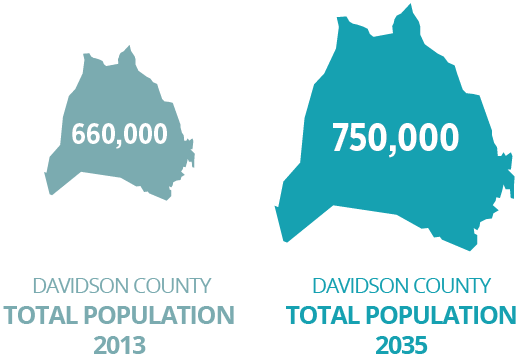
Source: 2009-2013 American Community Survey 5-Year Estimates, Nashville Area MPO 2035 Regional Transportation Plan
Transit reduces congestion
Congestion in the Nashville region is projected to increase significantly over the next decades. By providing direct and efficient transit service, we can move more people on our limited road space – a strategy that will well serve the growing region.
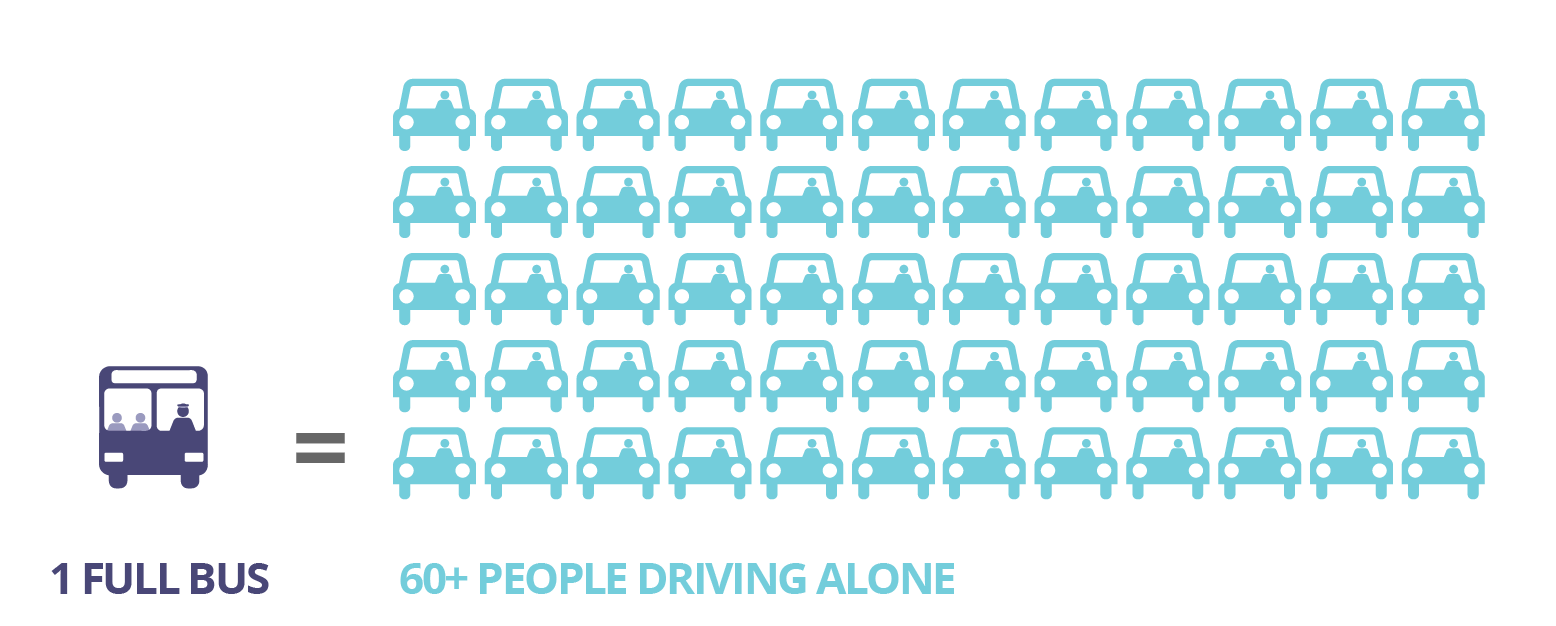
Transit supports changing transportation preferences
Transportation preferences are changing for a new generation of Americans. Car ownership and driving is losing its appeal.1 The Millennial generation (approximately those born between the early 1980s and early 2000s) and future generations expect new and diverse shared mobility options. Millennials – and other generations – value transit because it saves them money over using a car, and allows them the ability to do other things in transit: get work done, stay connected, or just relax.
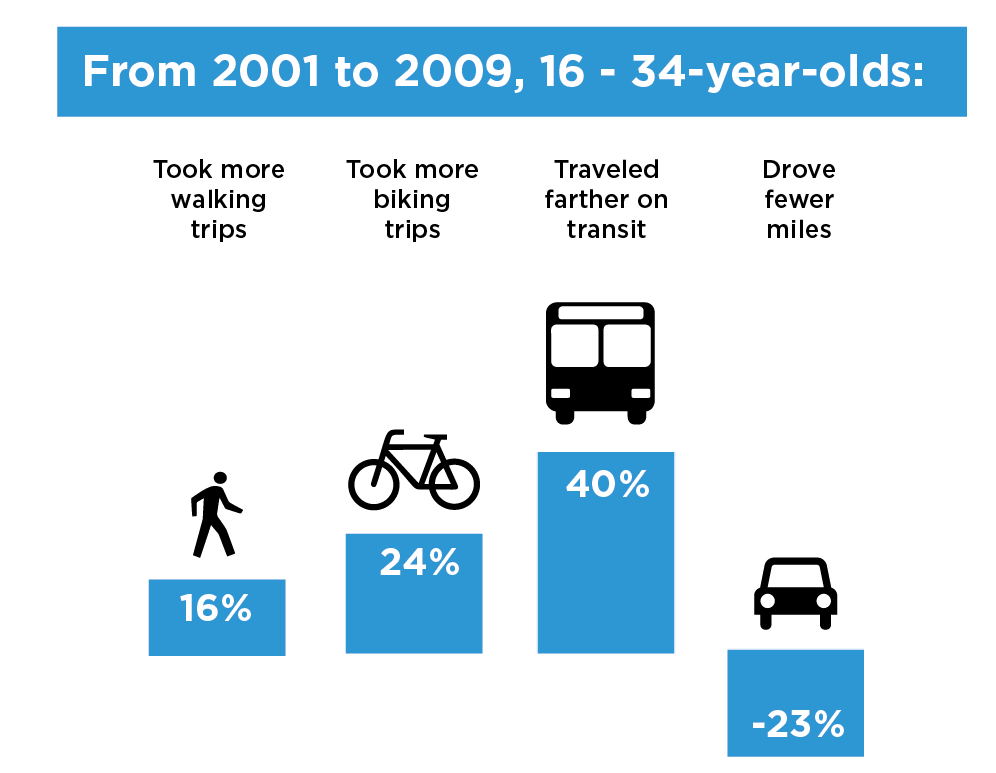
Source: Federal Highway Administration, “National Household Driving Trends,” 2001-2009
Transit provides access to essential needs for an aging population
The baby boomer generation, born approximately between 1946 and 1965, is reaching retirement. Tennessee ranks in the top third for senior growth rates in the U.S. – by 2020, the state’s population of older adults is expected to grow 45%.2 This large population of older adults will require safe and affordable transit options to stay active and engaged in their communities and access daily services and medical appointments.
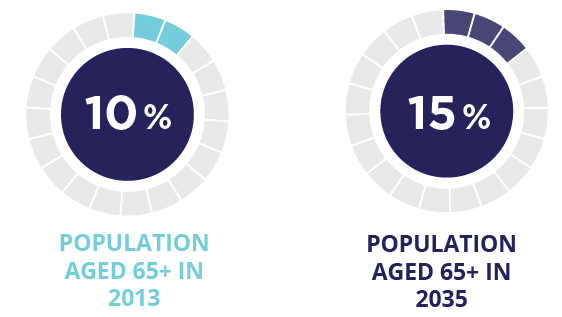
Source: 2009-2013 American Community Survey 5-Year Estimates
Transit provides an affordable transportation option
Residents in Davidson County spend over 26% of household income on transportation, more than they spend on housing.3 Of the top 20 regions in the country for highest annual transportation costs, the Nashville-Davidson–Murfreesboro–Franklin Metro area has the second highest annual transportation costs.4 Transit provides an affordable transportation option for those who depend on public transportation and those who choose to ride it.
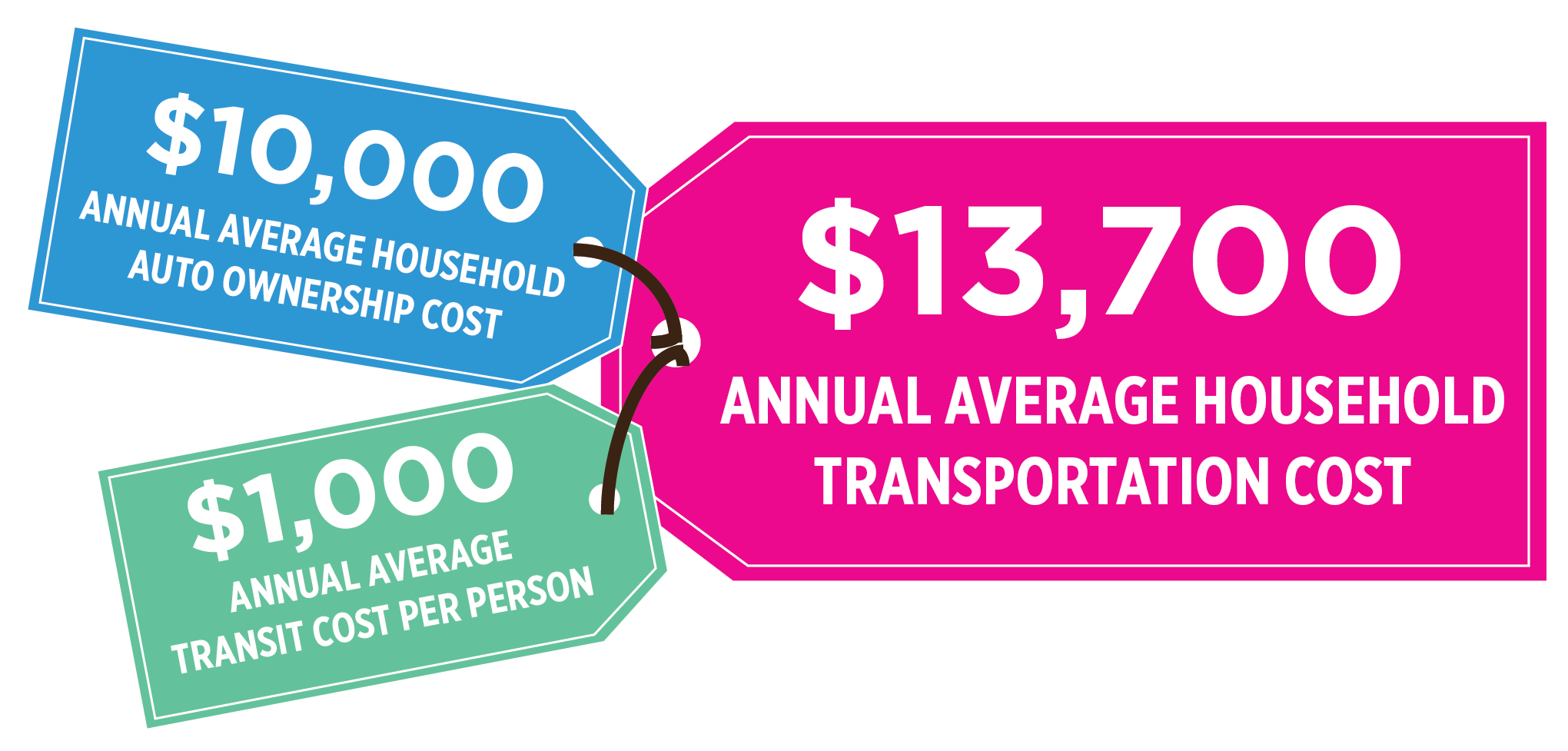
Source: Center for Neighborhood Technology Housing and Transportation Affordability Index
Transit keeps us healthy
Obesity is a rising epidemic nationally and in the Nashville region, where over 30% of Davidson County is obese. Across Tennessee, the obesity rate is expected to nearly double to 63% by 2030 if current trends continue.5 Transit improves health and promotes physical activity. Americans who use transit walk a median of 19 minutes daily to and from transit stops, and nearly a third achieve more than 30 minutes of physical activity daily, just by choosing transit.6
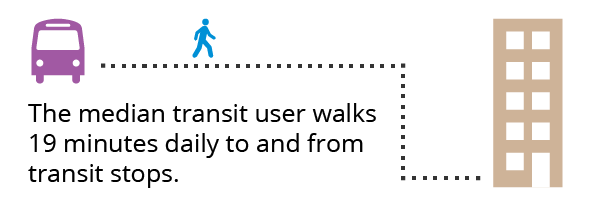
Source: Besser, Lilah M., and Andrew L. Dannenberg. 2005. Walking to public transit: steps to help meet physical activity recommendations.
- Federal Highway Administration, “National Household Driving Trends,” 2001-2009
- Brookings Analysis of Census Bureau Population Projections.
- Housing and Transportation Affordability Index.
- Housing and Transportation Affordability Index. Average Annual Transportation Costs for National Typical Household (2005-2009 Population of 1 million and greater).
- Trust for America’s Health. The State of Obesity: Better Policies for a Healthier America.
- Besser, Lilah M., and Andrew L. Dannenberg. 2005. Walking to public transit: steps to help meet physical activity recommendations.
